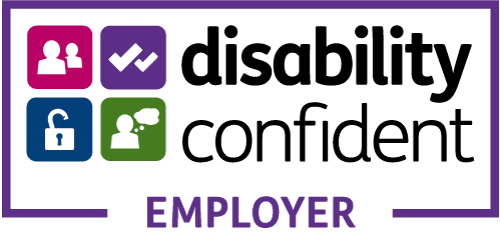
How to prepare & present your freelance portfolio
How to prepare & present your freelance portfolio
about 2 years ago by Kaisa Laug
Depending on your area of expertise, a portfolio is something you might not necessarily need, but it is a good way to showcase your best work whether you are a Digital Marketer, Copywriter, or Developer.
For Creatives, however, having a portfolio is a must have, and especially so in the world of freelance. Your portfolio is your strongest selling tool and brings to life, on paper, what you have discussed with a prospective client. It ‘walks the talk’ and is worth investing time in.
Although CV’s can be deemed as things of the past, here at Beyond The Book, we still get asked by our clients to send them along with portfolios. If you choose to use both a CV and portfolio, make sure the two marry up in terms of design and content; your portfolio is effectively providing evidence of the talent and experience you talk about on your CV. You can also have a CV page as part of your portfolio, which means you have all the information in one place. You can see our advice on tailoring your CV for freelance here.
Remember, you don’t always get a chance to talk through your portfolio in person, therefore, your portfolio should be comprehensive enough for it to thoroughly represent your skill set without you having to explain it. It’s not only about what is in it, but the structure and design from cover to cover. Make sure your portfolio effectively showcases your experience and abilities throughout - from the opening paragraph to the whole layout and a clear ‘call to action’.
Choose an appropriate format/medium
While many freelancers still have a physical portfolio, it is also crucial that you have a digital version. Whether that is a website or a PDF portfolio, a vast amount of business is now online, and you do not want to be left behind. Having a website also means that you can be found online, which opens up another avenue of potential work.
Depending on your area of expertise, make sure your portfolio also represents the channels you use and/or design for, as part of your day to day. For example, if you are a Web Designer, a website is essential, and for Developers, your potential future clients will want to see the quality of your code in one place, such as your own website or your GitHub.
Getting hold of samples
If you are just about to embark on your freelance journey, you can ask your previous employers’ permission to showcase work from past employment, as well as using your own personal projects or dummy work. Bear in mind that due to confidentiality it can be difficult to get hold of samples of freelance work. Even if you can only showcase a few pieces, the key is to showcase them well!
Which work is best?
It’s tempting to put all of your work in a portfolio but try not to. Firstly, you will end up with a very long list of samples that no one has time to go through and secondly, it’s important to diversify your portfolio as much as you can.
You will want your portfolio to effectively represent your skill set and abilities and, therefore, cater to a variety of clients. If you want to go beyond having one portfolio, you can always tailor your portfolio for a specific client and their requirement, but bear in mind that freelance is very competitive and you will want to have something ready to send, should a requirement come in.
A potential client may not agree with you as far as the work that you consider to be your best. It’s great to show your most exciting work, but also work that gets creative within tight corporate guidelines, or detailed annual reports. If you lack some commercial experience, you could try approaching local companies or charities, offer to work for free and ask to include this work in your portfolio.
As well as the finished work, remember to present your thinking. Just because scamps can be unrefined and scruffy does not mean these should not be included. The more of your thought that you can demonstrate, the better.
For your design portfolio, you may also want to present your work, so it appears within its relevant environment. You could include images of how the project looked at the time of completion. For example, if you have designed billboards, you may want to include a photo of the billboard in situ or if you have designed brochures, it would be good to show a few spreads of a brochure mock-up. When it comes to including campaign work, you don’t need to show every piece of application, but it would be good to showcase a few different formats to again demonstrate your ability to translate design to various formats and channels.
Presenting your samples this way makes the overall design neater and helps the viewer to see what the final product actually looked like, plus it demonstrates your skill to apply design in a relevant format.
Think about the structure and length
Give your portfolio a good flow to its structure, whether that is based on the different sectors you have experience in, the type of skill used for a project, or even dividing the work based on the different formats or channels you have done work for.
However, don’t take a client through your best work first and then to the work you are least proud of. You do not want to risk ending on a negative! Put your best pieces at the front and the back, and perhaps the more ‘nuts and bolts’ work in the middle.
While your portfolio should be comprehensive, remember that no one has time to click through 100 pages for an urgent freelance job. Our recommendation is to stick to 12-20 pages if you’re using a PDF portfolio, but the most appropriate length depends on your area of expertise, the layout, and of course the amount of commercial experience you have overall.
Using a website to showcase your work allows you to include as many projects as you like. The key again is to give it a good structure and label all the work appropriately to ensure that whoever is viewing your site can be directed straight to the relevant samples.
Explaining each piece
Don’t leave room for assumption – make sure your portfolio explains a little bit about each project, elaborating on the initial brief and the challenges, as well as your particular contribution. Also, remember to give credit to the agency or company that you were doing this work for. The viewer can’t make a real judgment of your abilities without having a feel of ‘before and after’, as well as what parts of the final piece you were involved in. It’s a careful balancing act as you don’t want this to be an essay, so try to keep it brief. For example, you could use bullet points with keywords.
Presenting your portfolio
Presenting your portfolio is, even more, a demonstration of your ability as a freelancer. At this stage, it is about your work and about you, your confidence and your passion. We recommend you rehearse your presentation beforehand, so you are able to articulate your thinking and approach in a concise and effective manner.
Make each piece a success, highlighting the challenge, your thought process and why you felt it was important to showcase. Be careful to not spend too long on each piece; though do ask if the client would like you to expand. Perhaps ask how long you have at the beginning of the meeting or, even better, ask before you get there and time your presentation to perfection. Don’t be too flashy - let the work be the hero. A flash presentation may look great but could be distracting.
Here at Beyond The Book, we aim to make freelancing a positive experience and highly successful. We want you to have a great career and hope you have found this information useful. Where possible, we are more than happy to give more tailored and specific advice on portfolios.
For more information please contact us on 01789 451510 or email us.
Continue reading
-

Typical freelance rates
-

Choosing the right approach to recruitment
-

How to set yourself up as a Self-Employed Contractor?
-
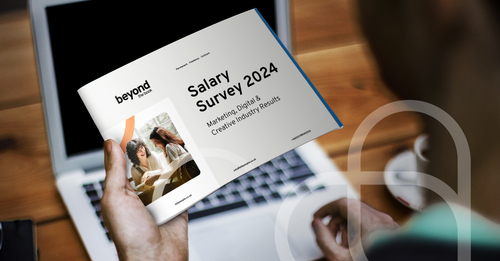
Leveraging a Salary Survey for Strategic Recruitment Planning
-
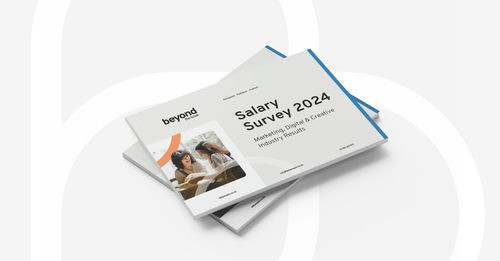
Salary Survey 2024 – FREE DOWNLOAD
-

Ineffective Recruitment – It’s a wrap!
-

Ineffective Recruitment - Part 6
-

Ineffective Recruitment - Part 5
-

5 reasons to avoid a multi-recruiter strategy
-

Ineffective Recruitment - Part 4
-
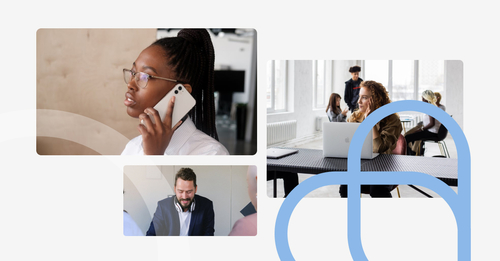
Ineffective Recruitment - Part 3
-

Ineffective Recruitment - Part 2
-
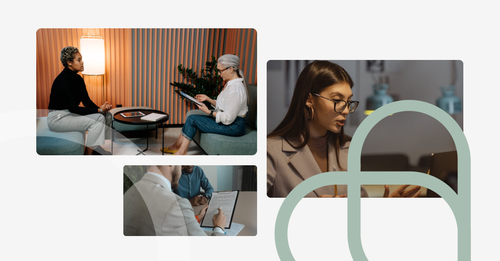
Ineffective Recruitment
-

Need to hire in confidence?
-

Be the best choice for your ideal candidate
-

Qualify Your Recruiter - FREE DOWNLOAD
-

Jack heads for the House of Lords
-

Maintaining your brand reputation during your recruitment process
-

Employee loyalty - from one way to two way, or the highway!
-

We are patrons of the GBTCC
-

How to protect your brand when recruiting directly
-

introducing our new Watchlist - for Companies
-

Introducing our new Watchlist - for Agencies
-

Expanding Horizons: Beyond the Book brings its Marketing recruitment services to the USA
-
.jpg)
Is it time to grow your marketing team?
-

Trust us to care and deliver
-

Complimentary Salary Benchmarking - 2023
-

A little update for candidates and freelancers
-

Our latest investment in recruitment excellence
-

Will you go out with me?
-

How best to recruit in a hurry
-

Midlands Annual Design Survey 2022
-

FAQ - About Beyond The Book, for businesses
-

How do you go about hiring a senior digital professional, agency side?
-

Where do you go if you are looking to bring your first Head of Digital into the team, in-house?
-

With Halloween approaching, lets discuss ‘ghosting’
-

How has hiring a Freelancer or Contractor changed post Covid?
-

Our Salary Survey 2022 - FREE DOWNLOAD
-

Update & insights in the current market 2022
-

The real reason your recruiter is asking you to work exclusively
-

Recruitment activity needed in the current marketplace
-

Where do you go when you need multiple roles filled, and quickly!?
-

Recruiting direct? Job copy advice in the current climate - FREE DOWNLOAD
-

Say Hello to Ella, Georgie and Mallory!
-

Meet our marketing recruitment team
-

Is a career in freelance Account Management for you?
-

Fundamentals for a creative CV
-
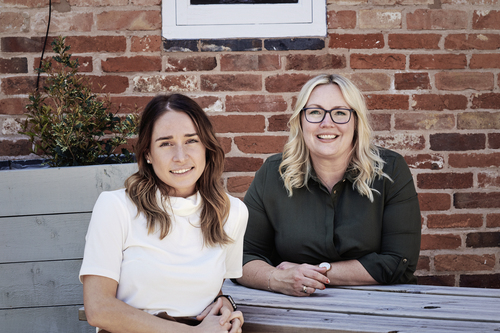
Is your freelance roster running dry?
-

A Case In Point – Helping my client look for a specialist Digital Marketing Executive
-

Client case study - why relationships matter
-

How to improve your diversity
-

How to prepare & present your freelance portfolio
-
.jpg)
People Need Not Apply!
-

Why are people who choose Agency life loving it more than ever before?
-

How to create a killer content plan
-

Want to get better at b2b marketing?
-

Update & insights in the current climate 2021
-

A case in point….
-

How we delighted this HR Manager with a seamless recruitment process
-

10 ways a quality, specialist recruiter can add significant value to your job search
-

What if... your recruitment planning isn’t aligned to the current climate?
-

Agency PR and Marketing Case Study
-

What is a career in recruitment really like?
-

Hybrid working: What does that even mean?
-

Where did those two weeks go?
-

Salary is the only way to be competitive?
-
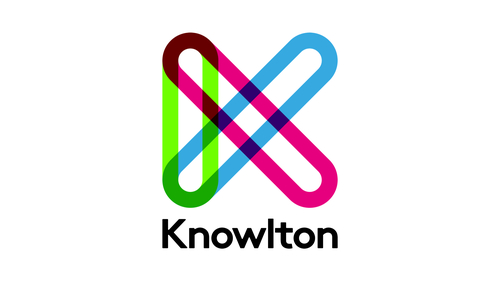
Advertainment - Driving trackable results
-

Our Salary Survey 2021
-
The Power of Employee Experience – Q&A with Robert Pender
-

LinkedIn Top Tips for Jobseekers
-
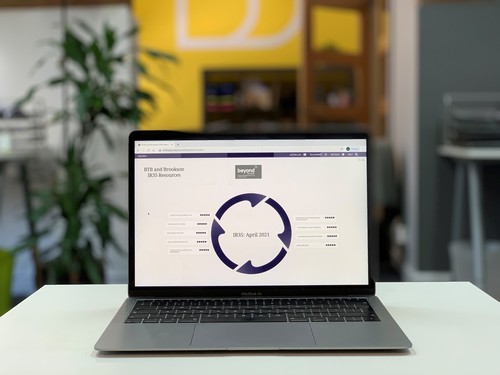
IR35 Cycle – IR35 support resources for your business
-

Should your strategy include email marketing?
-

Case Study – Content Manager
-

Q&A with Jessie and Michelle
-

BTB – Recordings of our IR35 webinars
-

How is the freelance market shaping up in 2021?
-

Supporting Juniors entering the creative industry
-

Flexible working is the new 9-5!
-

Is your company exempt from the IR35 reform?
-

BTB & Brookson One IR35 Webinar for Freelancers
-
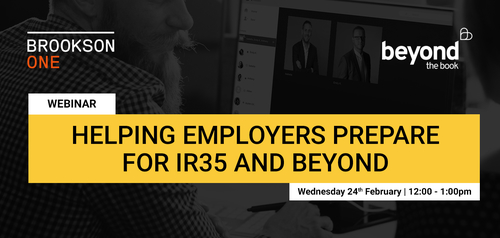
BTB & Brookson One IR35 Webinar for Businesses
-

A Social Media (and a bit of PR!) case study
-

How freelance works for clients
-

Are you missing your ideal candidate?
-

The very real cost of less than perfect recruitment
-
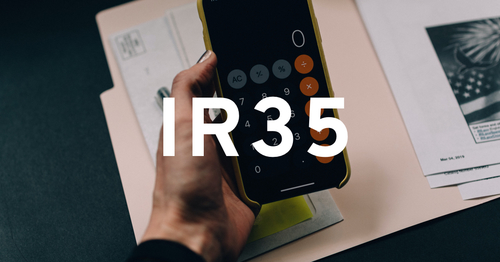
IR35 Off-Payroll changes - FREE DOWNLOAD
-

We have the market covered
-

Our commitment to Businesses in 2021
-

We have a winner!
-

Information update from us to you
-

If 2020 has taught us one thing...
-

Happy New Year!
-

Recent Marketing and Content case study
-

Recent PR case study
-

Recent Marketing case study
-

Recent Digital Marketing case study
-

Do you need a PR person?
-

Recent creative case study
-

An update for businesses
-
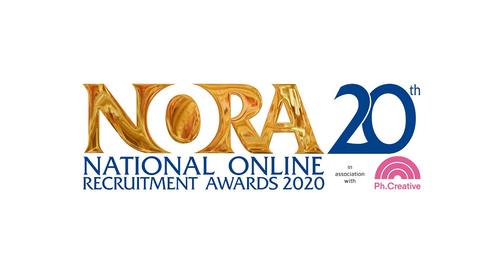
We’re finalists!
-

Creative and Design
Client Services and DeliveryDigital Marketing
Marketing and Brand
PR and Communications
Digital Specialists
Freelance -
13 The Courtyard
Timothy's Bridge Road
Stratford-upon-Avon
Warwickshire
CV37 8NP
01789 451510
info@btbpeople.co.uk
View map -
Stay connected to
Beyond The Book
Beyond The Book is a Disability Confident Employer and Inclusive Recruiter. If you experience any barrier in navigating, reading or processing the content of our website, or applying for any advertised positions, please contact Sally Moist or Adam Smith (or ask someone on your behalf to). Sally or Adam will reach out to you promptly (or your named representative), listen to your needs and identify ways to help you access our information and service.
© Beyond The Book Ltd. | Registered in England no. 06856820 | Vat no. 102143971 | Privacy Policy
